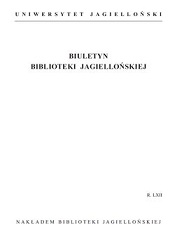Uposażenie asystentów młodszych w polskim państwowym szkolnictwie akademickim od 1 X 1923 do 31 I 1934 roku
The Salaries of Younger Teaching Assistants at Polish public Universities from 1st October 1923 to 31st January 1934
Author(s): Jarosław JastrzębskiSubject(s): Economy
Published by: Biblioteka Jagiellońska
Keywords: higher education; history of higher education; teaching assistant; salaries of teaching assistants; salaries in the Second Polish Republic
Summary/Abstract: The purpose of this article is to present the principles of remuneration of younger teaching assistants in Polish universities as well as the changes in the amount of their salaries between 1923 and 1934. Theses problems are presented against the background of three key moments in the economic history of the Second Polish Republic, that is, the hyperinflation (1923–1924), the currency reform of Władysław Grabski (1924) and the Great Depression (1929–1934).This article is based on source material and involves the analysis of legal documents from 1923 to 1934. It begins with an outline of the stages of changes in the law concerning academic salaries as well as of the place of the discussed point system between the preceeding multiplier system (1920–1923) and the succeeding fixed rate system (1934–1939). Subsequently, it presents the essence of the point system which was used from 1st October 1923 to 31st January 1934 in fixing salaries. Particular components of the salaries have been classified and distinguished. The first of these, that is, the reference salary, consisted in the basic salary and a regulatory allowance, and the second, that is, the supplementary salary, consisted in an economic support allowance and a household allowance. The reference salary was a salary to which every younger teaching assistant was entitled during the effective period of the point system. The subsidiary salary was a salary to which only some assistants were entitled, namely those who fulfilled certain criteria determined by the law (for example, they had families), or which could be admitted only temporarily. This article discusses the essence and purpose of each of these allowances as well as the mechanism of calculating their amount. The amount of particular components of remuneration was determined by salary points whose value depended on the rhythm of inflation. The value of one salary point was called the multiplier because the real value of the salaries was calculated by multiplying the number of points adscribed to each component by the current value of one salary point. Such a construction of the salary system allowed to react to changes in consumer prices in the economy in a quite elastic way and, in consequence, to better protect the purchasing power of the salary. The changes in the value of the salary point were initially very signficant and in the last months of 1923 they were ordered twice a month. Together with the reform of Władysław Grabski, fluctuations in this area diminished. Changes were usually made every month and they never exceeded a few Groschen each time. When in 1926 the public finances were successfully stabilised, the value of one salary point was anchored at a stable level, which remained unchanged until 1934. The present article also aims at showing the main advantages and disadvantages of the discussed remuneration system as well as the circumstances in which it was ushered in and abolished.
Journal: Biuletyn Biblioteki Jagiellońskiej
- Issue Year: 2012
- Issue No: 62
- Page Range: 181-201
- Page Count: 21
- Language: Polish

